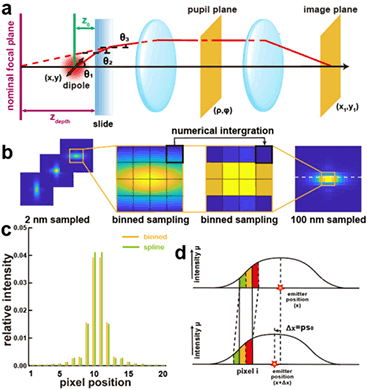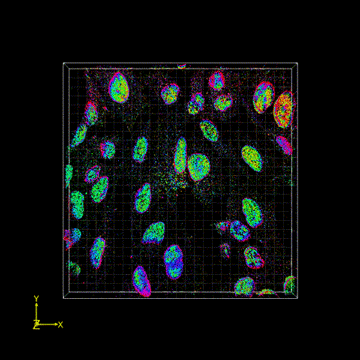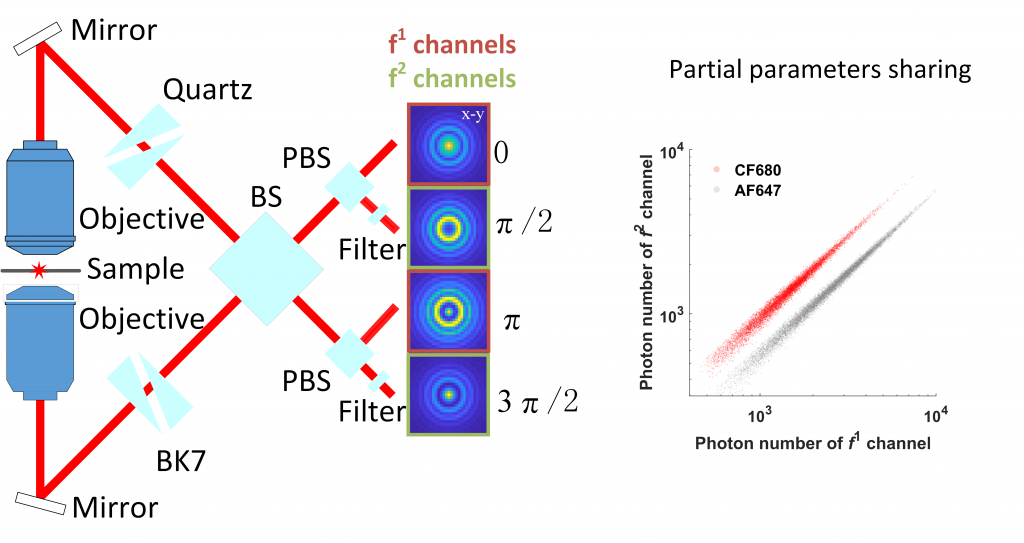Optimal-Sampling-Rate-of-Different-PSFs-in-SMLM
Resolution of single molecule localization microscopy (SMLM) depends on the localization accuracy, which can be improved by utilizing engineered point spread functions (PSF) with delicate shapes. However, the intrinsic pixelation effect of the detector sensor will deteriorate PSFs under different sampling rates. The influence of the pixelation effect to the achieved 3D localization accuracy for different PSF shapes under different signal to background ratio (SBR) and pixel dependent readout noise has not been investigated in detail so far. In this work, we proposed a framework to characterize the 3D localization accuracy of pixelated PSF at different sampling rates. Four different PSFs (astigmatic PSF, double helix (DH) PSF, Tetrapod PSF and 4Pi PSF) were evaluated and the pixel size with optimal 3D localization performance were derived. This work provides a theoretical guide for the optimal design of sampling rate for 3D super resolution imaging.






